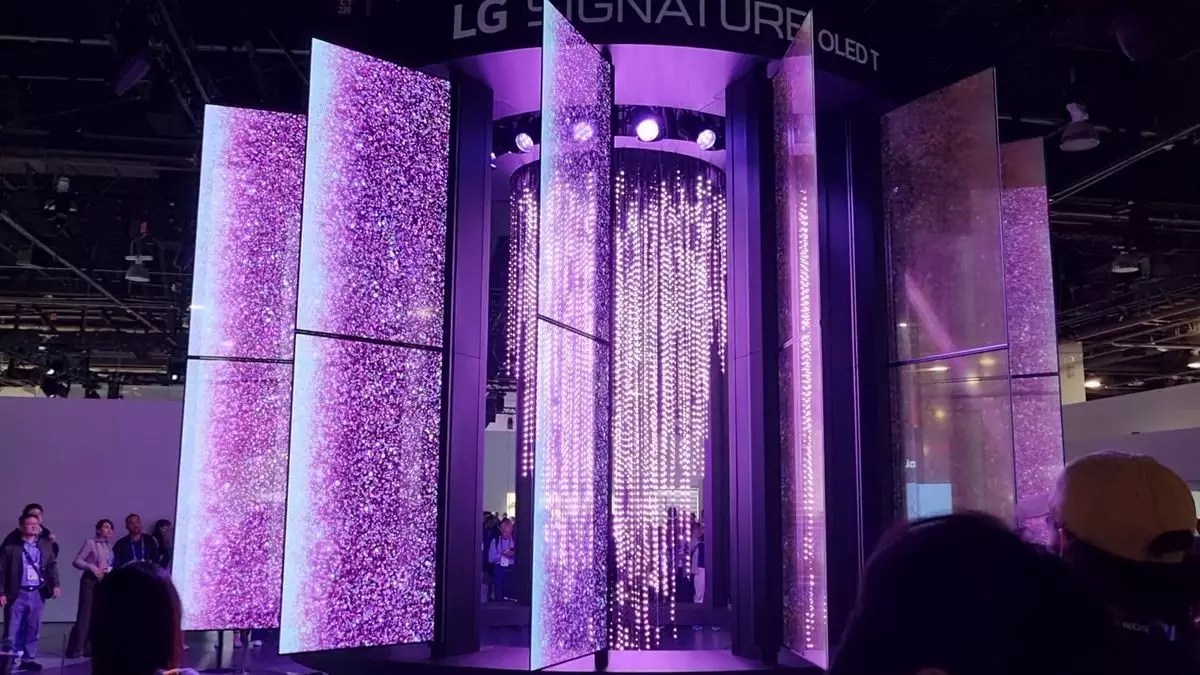In the ever-evolving landscape of technology, trade shows often showcase groundbreaking innovations that can captivate the imagination of both consumers and industry professionals alike. The recent CES 2025 exemplified this, presenting cutting-edge displays that blur the lines between function and spectacle. However, amidst the excitement and intrigue, one must critically evaluate the practicality and implications of such innovations—for example, the emergence of transparent displays.
It’s easy to become enthralled by the visually striking nature of transparent screens. These displays, often adorned with vivid colors and striking images, create the illusion of content floating in mid-air. At CES 2025, LG’s transparent TV stole the show—not merely as a piece of technology but as an art installation that arrested attention. The sheer scale and design ingenuity of the 77-inch signature OLED display, especially when orchestrated in a choreographed sequence resembling a dance, evokes the very essence of futurism. There’s no denying that experiencing such a display fosters a sense of excitement and wonder that is difficult to replicate elsewhere.
Yet, this fascination begs the question: What practical applications do transparent displays really have? While they certainly serve as eye-catching focal points, their viability in daily life remains questionable. What utility does a transparent television offer in a standard living room, where viewing angles and lighting conditions can drastically affect visibility? The answer, it seems, is limited.
The Price of Attractiveness
One of the most pressing issues surrounding these showcases is the exorbitant cost associated with owning such technology. The LG transparent TV, flaunting a price tag of $60,000, is hardly an investment most people can justify. More pertinent is the idea that transparent displays may merely fuel consumerism rather than fulfill a genuine need. While the aesthetics of a transparent screen may appeal to tech enthusiasts and design aficionados, for many, the idea of purchasing a display primarily for decorative purposes feels misaligned with practical living.
The trade show environment is filled with products that thrive on the “wow” factor—technologies that dazzle spectators but lack resonance in real-world scenarios. The glamor of the transparent display may quickly dissipate when considering how it would fit into everyday life, potentially becoming another piece of unused tech in a domestic setting.
Emerging Alternatives: The Micro LED Marvel
Amidst the transparent display’s glimmer, TCL’s 163-inch Micro LED X11H Max stood out as another example of innovation that, unlike its transparent counterpart, seemed to prioritize a user’s experience. With an awe-inspiring response time and an impressive brightness output of 10,000 nits, technological offerings such as the X11H Max possess qualities that would facilitate immersive viewing experiences—particularly for gamers. Envision playing high-octane racing games or watching films in stunning fidelity; these possibilities are backed by tangible technological advancements that cater directly to consumer desires.
However, even the X11H Max demands attention regarding affordability, with a staggering price of $110,000. This delves deep into the ongoing conversation around the escalating costs of high-end displays—asking whether the cutting-edge technology provided is worth its weight in gold compared to its utilitarian alternatives.
As compelling as these innovations might be, there exists an inherent dichotomy between their visual appeal and their functional value. The cyberpunk aesthetic that permeates the allure of transparent displays encapsulates a vision of the future, yet we must tread cautiously, questioning the sustainability of such glamor in our everyday lives.
Ultimately, while CES 2025 offered a fascinating look at the forefront of display technology, it also urged us to reflect critically on what we truly need in our homes versus what is merely tantalizing to our senses. As we marvel at technological advancements and their sweeping possibilities, let’s remain grounded and ensure that our enthusiasm for the extraordinary does not overshadow the importance of practical utility.


Leave a Reply